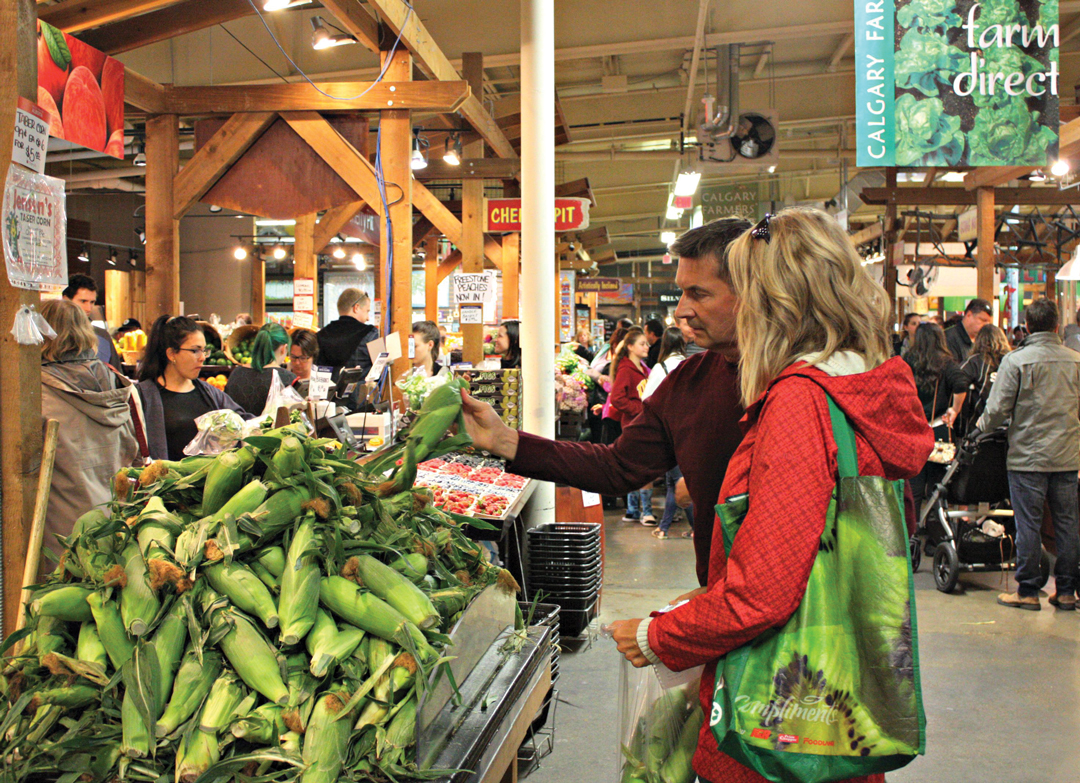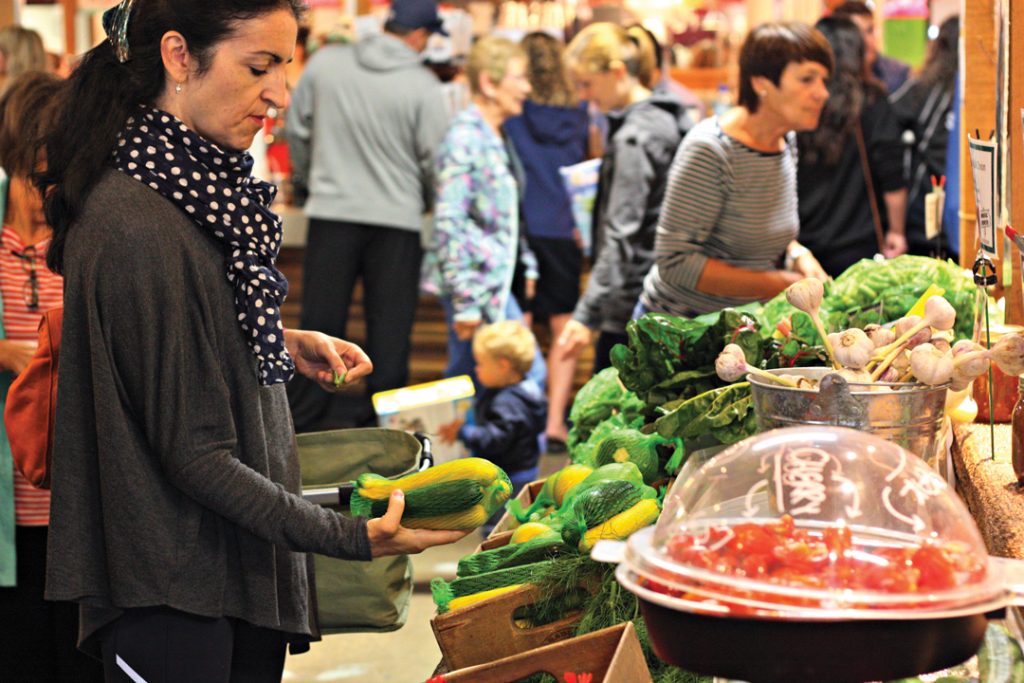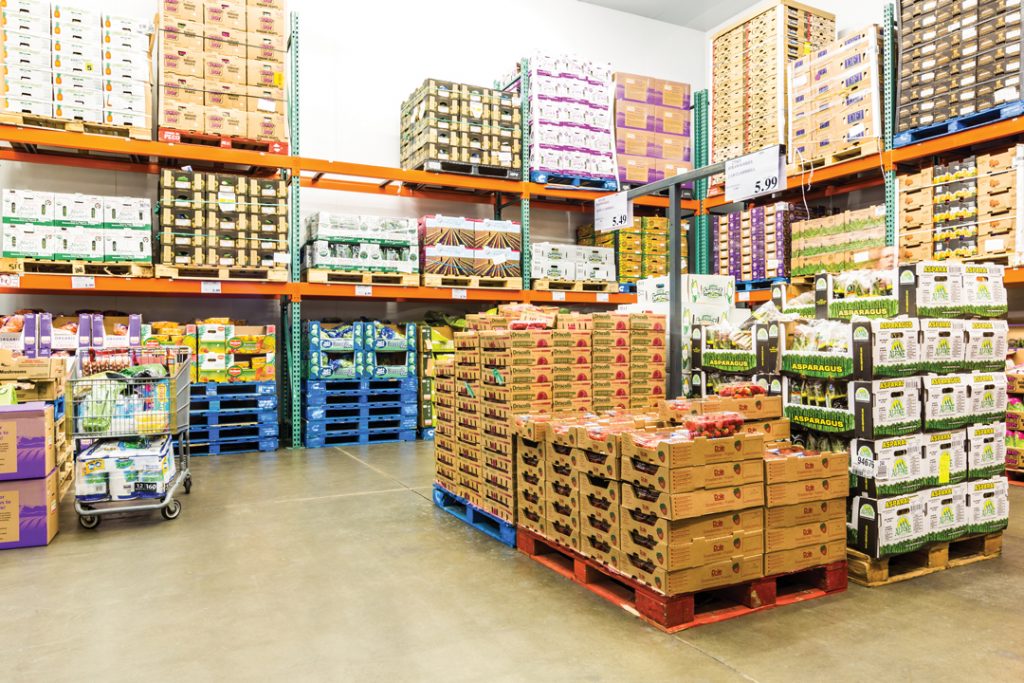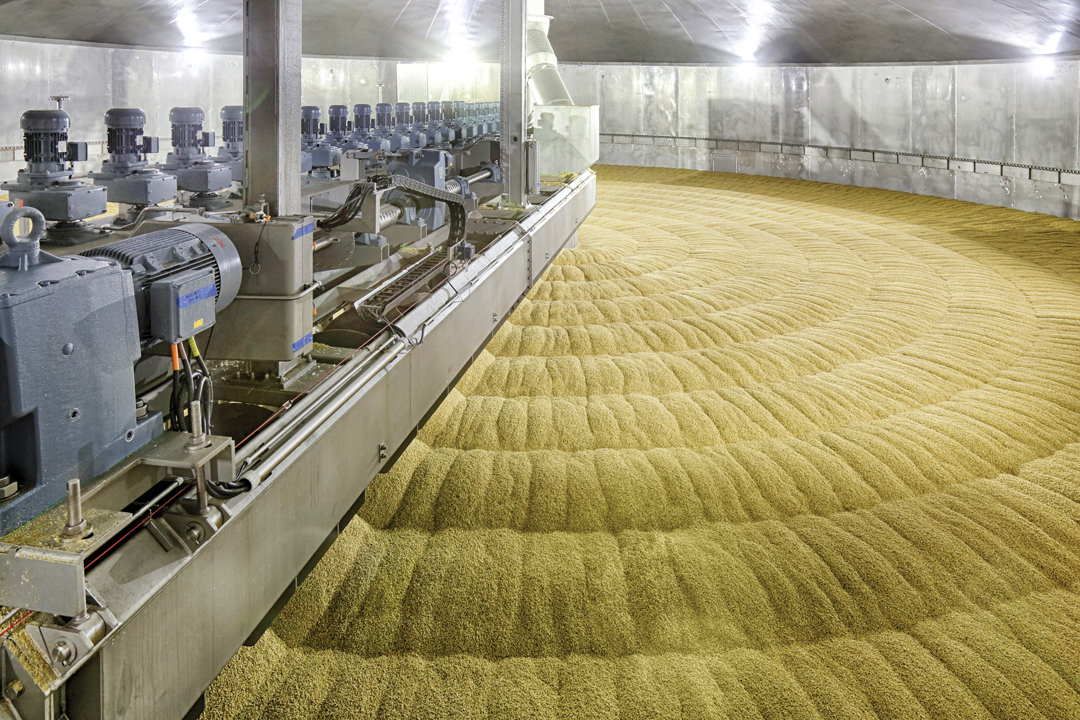‘TIS THE SEASON
REDISCOVERING THE JOYS OF SEASONAL EATING
BY TYLER DIFLEY
In today’s supermarkets, the contents of the fresh produce section can transport you—and your palate—around the world and through the seasons. For Canadians in particular, it can be easy to take for granted the fact that we have access to warm-weather fare like tomatoes on the vine, avocados and blueberries even when it’s -25°C outside and the ground is covered by two feet of snow. However, it wasn’t always this way.
Prior to advances in food storage and transportation technologies, and the interconnectedness of our global economy, humans were slaves to the rhythms of the seasons when it came to what types of food were available. In the warm months of late spring, summer and early fall, people could enjoy a variety of fruits and vegetables at the peak of their availability and freshness. But when the cold of winter began to creep in, they were forced to conserve their warm-weather bounty for several months in any way they could, whether by canning, pickling or otherwise preserving it, or by cellaring the hardier items—potatoes, carrots and onions, for example—to prevent spoilage.
Although our modern food system has rewarded us with more variety and choice than our ancestors could ever dream of, its rise has coincided with some troubling changes in the way people interact with and relate to their food.
“We’ve kind of become desensitized to where our food is coming from and how it is grown,” said Leilani Olynik, marketing and events co-ordinator for the Calgary Farmers’ Market. “That kind of relationship with food is just gone because you can go to the grocery store and buy really whatever you want and whatever is on your recipe list. I think, in having that mass quantity of variety available to people in the grocery store, it’s also removed them from the farmer.”
The good news is that our relationship with food—and the farmer—can be repaired to some degree by eating seasonally. This simply means seeking out fruits and vegetables that are “in season”—harvested at the end of their natural growth cycle. While our ancestors ate seasonal produce because they had no choice, making a conscious choice to eat seasonally has economic, environmental and flavour-related benefits, and can reconnect people with agriculture—the vital industry that produces the food we eat every day.
THE SEASONAL ADVANTAGE
Seasonal produce can be healthier and better tasting than produce grown out of season. Picked at the peak of ripeness, and usually grown near where it is eventually sold, seasonal produce does not need to travel far between farm and fork—lowering the risk of spoilage and ensuring it retains all of its fresh-picked flavour. On the other hand, out-of-season produce usually needs to be picked before it ripens so that it can withstand the long journey over land and sea from producer to consumer. This early harvest, combined with prolonged travel and storage times, can impact the flavour of a number of fruits and vegetables.
It’s not difficult to find examples of fruits and vegetables that have different characteristics depending on whether or not they’re in season, as anyone who has eaten the mealy, flavourless tomatoes available during the winter can attest.
“Tomatoes are definitely one that has a very short season, and a summer tomato tastes different from a February tomato,” said Vincci Tsui, a Calgary-based registered dietitian and nutrition blogger. “Also, berries are just super popular year-round, when really they’re best in late spring or summer when they come into season.”
Fruits and vegetables grown and harvested in season also tend to have a smaller environmental footprint than their year-round counterparts. When something is grown out of season, the inputs required to support that crop to maturity—mainly water and energy, in the form of fossil fuels or electricity—are often much higher than normal. In this respect, seasonal food can be more efficient to produce. This also does not account for the resources required to transport non-seasonal produce around the world from warm-weather growing regions to wherever there is demand.
If the health and environmental benefits aren’t enough, seasonal produce has another advantage over out-of-season items: cost. Because seasonal produce is at the peak of its availability and doesn’t usually have many additional costs tacked on for transportation or storage, it’s often cheaper than out-of-season fruits and vegetables. Grocery shoppers can take advantage of this common-sense equation and reap the rewards at the cash register.
“With the economy where it is, if you’re eating seasonally, chances are you’re purchasing foods that tend to be less expensive,” Tsui said.
As food trends and environmental catastrophes in important growing regions drive up the costs of popular produce items, seasonal fruits and vegetables should be experiencing a renaissance of sorts. However, the majority of consumers don’t seem to be interested in taking advantage of these savings.
“We get uptight when costs go up—cauliflower was the big story in the winter,” said Mike von Massow, an agricultural economist and associate professor at the University of Guelph. “We see these huge spikes, but rather than saying, ‘What else could I eat?’ we complain about what we want to buy being so expensive.”
However, the current economic climate in Alberta might be enough to convince some people to start shifting their buying habits whenever they’re at the grocery store or farmers market.
“I think people are becoming more aware of where their dollars are going because they have fewer dollars to spend, so they really want them to count,” Olynik said. “I think people are really starting to think about how they spend, how much they spend and where they spend it.”
Despite its many benefits, it’s not always possible to eat seasonal produce—especially in Alberta. Although the province is well suited for growing grains, pulses and oilseeds on a large scale, the growing seasons for many popular fruits and vegetables are extremely short. So unless you’re willing to get by on canned or frozen produce during the colder months, imported, out-of-season produce is a necessity.
“There are definitely lots of benefits to eating seasonally, but we also have to recognize that it’s not always the most practical choice, living in Alberta with our long winters,” Tsui said. “We don’t really grow any fruits or fresh vegetables in the winter, and sometimes we do need to import these foods from other places to get that food variety and make sure we’re getting the nutrients that we need.”
Others choose to purchase imported, out-of-season food items for reasons that go beyond nutrition or variety. For many new Canadians and their families who are living in Alberta, imported foods and flavours represent an important link to their home country and cultural traditions in a way that seasonal produce could never recreate.
“I think another important aspect of food is that it’s a reflection of our culture,” Tsui said. “There are a lot of people in Alberta who are immigrants from other countries, myself included, and I think part of food and culture is being able to eat the foods that are associated with your culture.”
It might not be practical to eat seasonally year-round, but if seasonal eating is beneficial, why don’t more people look for seasonal produce options? The answer might have more to do with human psychology than the foods themselves.
“The research suggests that we are pretty stable in what we buy. People who want broccoli and green beans buy broccoli and green beans—they have their go-to vegetables,” von Massow said. “We are not, as North Americans, terribly flexible anymore. So we have all of this choice, but we don’t tend to take advantage of that choice very much.”
According to von Massow, if consumers want to see more seasonal produce options at the grocery store, they will have to vote with their wallets, as food retailers will stock whatever items are most in demand. But first, people will have to branch out beyond their go-to fruits and vegetables.
“I think that those products are out there and available, and would be more available if more of us were buying them,” von Massow said. “If more of us were looking to buy carrots and beets and potatoes in the winter, there would be more carrots and beets and potatoes in the winter.
“We can do it, we just have to choose to do it and get outside of our routine of what we eat.”
SHOPPING THE SEASONS
A number of resources exist for those who want to find out what produce is in season in their area at different times of the year. Several Alberta farmers markets, including the Calgary Farmers’ Market and Edmonton’s Old Strathcona Farmers’ Market, list what fruits and vegetables are in season each month on their websites, as well as a number of recipes that can be made with them. Eat the Seasons—an online initiative that originally provided seasonal food information for people in the United Kingdom, but now has a North American sister site—is another valuable resource for people who want to know what’s in season. Armed with this information, you can track down the best Alberta has to offer all 12 months of the year—whether it’s vibrant red rhubarb in April or tender asparagus in June.
“Especially in the summers—as short as they are—some people might be surprised by what is produced and what is grown here,” Tsui said.
Although the pickings during the winter are decidedly slim, there are still options for people who want to eat seasonally as much as possible. Thankfully, Albertans live in a province that is renowned for its livestock and crop production, so fresh beef, pork, poultry and other meats, as well as a number of grains and pulses that retain their flavour and health benefits in storage, are “in season” and available year-round. But if you are set on eating Alberta-grown fruits and vegetables in the dead of winter, the key is to plan far enough ahead.
“It could be as simple as learning how to can, or freezing certain things, even if it’s just blanching a bunch of cauliflower or broccoli or asparagus, then freezing it and keeping it in your freezer for the wintertime,” Tsui said. “When you’re talking about the winter months, you want to look for the heartier greens like cabbages and kale that are not as nice and tender as those spring greens, but definitely a more seasonal choice.”
In terms of spotting what’s in season at your average grocery store, it’s easier than you might think.
“The truth is, if you look around your grocery store, the market tells you pretty much what is seasonal and what is imported,” von Massow said. “You can see what’s in season just by the price of what it is at the grocery store or farmers market or wherever you’re buying it.”
In addition to the market forces that can reveal what is in season, many grocery chains have started to highlight local meat and produce, as well as the farmers who raise the animals and grow the crops. “I think there are lots of local grocery stores . . . who are on board with promoting local farmers and producers,” Tsui said.
The websites of the Co-op and Sobeys grocery chains appear to confirm this perception. “Our focus has always been having the freshest produce, including local, western and Canada-wide growers, whenever possible,” Calgary Co-op’s produce page reads. “We ensure that seasonal produce is available and that it is imported based on quality, freshness, and availability.”
Similarly, Sobeys’ produce department uses the tagline, “more in freshness, more in season, more in local.” The company’s website also prominently lists seasonal recommendations on its produce page.
At the farmer’s market, Olynik said the best way to find out what is in season is to go straight to the source: the farmers themselves.
“People have the opportunity to come in and learn about where their produce or meat or whatever items they are purchasing are coming from,” she said. “I think being able to ask those questions is a rare and really special opportunity for people.”










Comments